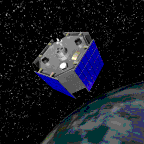
Ride with Bezos? Price still unknown – the only ticket was auctioned for $28 million: for a ten minute ride, Blue Origin’s meter runs fast as a rocket. Fly with Branson? Over 600 seats on Virgin Galactic are pre-sold, going for $200, 000 to $500, 000 for a hour’s excursion. Prefer a longer stay? A space vacay to the International Space Station by Elon Musk and SpaceX: $55 million. There are other costs – environmental.

One way to evaluate financial, and environmental, costs of private space travel could be to look back to 17 December 1903 when the Wright Flyer took off from Kitty Hawk. In December 1944, the Convention on International Civil Aviation established rules for civil aviation: stated goals were safety and international cooperation. In 2004, the world had 900 airlines, tallying 22,000 aircraft serving 1,670 airports. (Spaceports, overseen by the Federal Aviation Administration, are now in high construction demand.) In 1960, civil aviation flew 100 million people; by 2017, 4 billion passengers. In 2019, revenues in the global aviation industry reached $838 billion. However, passenger air travel spikes the highest (and fastest) growth in individual emissions. Flight shaming (flygskam) is a resulting development. Branson and Bezos both drew criticism for spending funds on space tourism when there is a world in need below.

Commercialization of space might also be examined through the development and expansion of satellites. COMSAT, the first commercial satellite operator, began with Intelsat and Inmarsat. When “Early Bird” launched in 1965, the Communications Satellite Act had just established a policy for a commercial communications satellite system open to many nations cooperatively. Comsat began with a $5 million line of credit. Sales by 1996 were $1 billion. Launching satellites produces carbon pollution, and also another kind of pollution: traffic. As of 1 August 2020, there were 2,787 satellites orbiting Earth – 1,364 of them communications satellites both government and commercial.

Branson’s Virgin Atlantic, a commercial airline, ferries passengers worldwide, diluting the energy burden per seat. But Virgin Galactic carries just six, tallying a much higher per-person emissions cost; the one-hour flight is equivalent to driving a typical car around the Earth. One concern is the type of fuel used by Virgin Galactic: the system runs on a kind of synthetic fuel that burns with nitrous oxide, shooting black carbon into the stratosphere. Blue Origin uses liquid hydrogen and liquid oxygen, causing 750 times less climate-forcing magnitude than Virgin’s (Ahmed 2021). SpaceX will bring four passengers to space in September, causing the equivalent of 395 transatlantic flights worth of emissions.

Space tourism projects market growth of 17% each year in the coming decade. Price-per-flight will be reduced, and innovations will increase. Just as SpaceX introduced reusable rockets, a game-changer for the space industry (landing 44 of 52 attempts), and Axiom is planning to launch its own commercial space station at the cost of $1.8 billion to NASA’s $150 billion for the International Space Station, privatization of space will streamline the industry. But because rockets emit 100 times more CO2 per passenger than flights (Marais 2021), and because rocket exhaust is released directly into the atmosphere from a higher point of entry, the ozone layer (earlier protected by the 1987 Montreal Protocol) may be again under threat.

Some feel private space commercialization may be a misuse of resources more urgently needed on Earth; others predict important innovations will follow July 2021’s first commercial space tourism flights. Some of the most important developments must be in fuel options and emissions management. Will commercial space flight learn from civil aviation? Bezos’ Blue Origin space tourists brought little carry-on luggage, but two significant items hitched a ride: Amelia Earhart‘s goggles, and a piece of canvas from the Wright Flyer.
Ahmed, Issam. “Environmental concerns grow as space tourism takes off.” 18 July 2021. Phys.org. https://phys.org/news/2021-07-environmental-space-tourism.html
Amelia Earhart Hangar Museum. ameliaearharthangarmuseum.org
CNBC. “Blue Origin launch re-cap.” 20 July 2021. CNBC.com. https://cnb.cx/36LdlzA.
Federal Aviation Administration (FAA). “Spaceports by State.” https://www.faa.gov/space/spaceports_by_state/
Johnson, Dave. “11 of the biggest innovations shaping the future of spaceflight today.” 12 October 2019. Business Insider. https://www.businessinsider.com/spaceflight-travel-innovations-spacex-rockets-2019-10
MacMartin, Douglas G. and Ben Kravitz. “Mission-driven research for stratospheric aerosol geoengineering.” 22 January 2019. Proceedings of the National Academy of Sciences of the United States of American (PNAS). https://www.pnas.org/content/116/4/1089
Marais, Eloise. “Space tourism: rockets emit 100 times more CO2 per passenger than flights – imagine a whole industry.” 19 July 2021. The Conversation. https://theconversation.com/space-tourism-rockets-emit-100-times-more-co-per-passenger-than-flights-imagine-a-whole-industry-164601.
Pollard, James. “What is the Environmental Impact of Private Space Flight?” 20 July 2021. NBCsandiego.com. https://www.nbcsandiego.com/news/national-international/what-is-the-environmental-impact-of-private-space-flight/6289612/
Reference for Business. “COMSAT Corporation.” https://www.referenceforbusiness.com/history2/70/Comsat-Corporation.html
Ross, Martin N. and Dorin W. Toohey. 24 September 2019. “The Coming Surge of Rocket Emissions.” 24 September 2019. EOS, 100. https://doiorg/10.1029/2019EO133493
Smithsonian National Air and Space Museum. “1903 Wright Flyer.” https://airandspace.si.edu/collection-objects/1903-wright-flyer/nasm_A19610048000
United Nations. “Montreal Protocol on Substances that Deplete the Ozone Layer.” 16 September 1987. https://web.archive.org/web/20130602153542/http://ozone.unep.org/new_site/en/montreal_protocol.php
